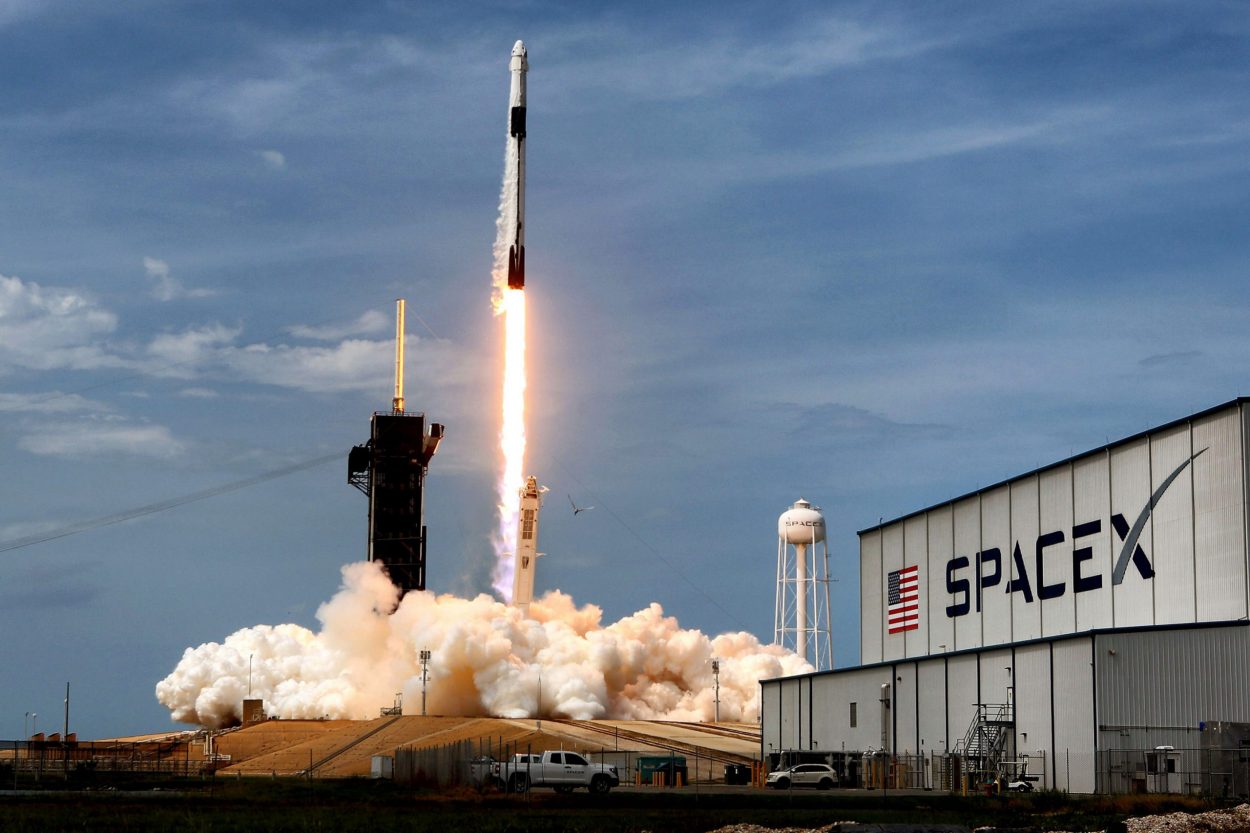To increase its stake in the rapidly growing space-based internet sector, China is forging ahead with its ambitious plan to construct a second satellite mega constellation known as ‘G60 Starlink.’
This ambitious project, backed by the Shanghai municipal government, aims to compete head-to-head with SpaceX’s Starlink, according to the SCMP. G60 Starlink, once completed, will comprise a fleet of more than 12,000 satellites strategically positioned in low Earth orbit.
This undertaking mirrors the scale of the National Network, often referred to as Guo Wang, which is a separate satellite constellation project initiated by the Chinese government.
Guo Wang, with its staggering count of approximately 13,000 satellites, has been commonly touted as China’s response to SpaceX’s Starlink.
The National Network constellation construction is underway, with the state-owned Guo Wang company overseeing its development.

In August, a delegation led by Cheng Xiangmin, the party secretary of Shanghai’s Songjiang district, conducted an inspection visit to a newly established center in western Shanghai. This facility is dedicated to the large-scale production of G60 satellites.
During their visit, the delegation engaged with various stakeholders, including industrial partners such as Shanghai Alliance Investment and Shanghai Spacecom Satellite Technology, to gain insights into the ongoing progress of the G60 Starlink project.
A representative from Shanghai Alliance Investment said, “Paying close attention to the construction goals and timeline of the G60 Starlink project, we have worked hard to roll out investment and help boost technology transfer in the sector.”
The report noted that all parties involved in these discussions agreed to collaborate closely, with a shared commitment to resolving critical challenges and expediting the progress of the G60 Starlink project.
China’s Attempt To Rival SpaceX
G60 Starlink, in its earlier stages, primarily focused on developing an internet satellite cluster rather than having a clearly defined constellation plan.
A satellite cluster is a system of multiple satellites collaborating within a defined space region to accomplish various missions.
The project has been underway since 2016, although its cluster plans were only unveiled in 2021. The name “G60” is derived from the expressway of the same name that traverses multiple cities in the Yangtze River Delta region.
The newly established satellite production facility under the project can manufacture 300 satellites annually.
It has also been claimed that the center will reduce the cost of manufacturing a single satellite by as much as 35 percent. However, specific reference points for this reduction have not been disclosed.

The project’s technical specifics and its timeline remain undisclosed. Moreover, there is uncertainty surrounding how China intends to efficiently launch a substantial number of satellites into orbit, especially given its lack of a powerful and reusable rocket like SpaceX’s Falcon 9.
SpaceX’s dominant position in space-based internet services rests on its unique capability as the sole global company capable of reliably and consistently launching satellites at the scale required to establish a vast constellation in low Earth orbit.
Observers note that since 2018, SpaceX has executed 109 launch missions, successfully deploying over 4,800 Starlink satellites. Notably, the company recently celebrated the milestone of acquiring 2 million active customers from over 60 countries for its space-based internet broadband service.
The increasing influence of SpaceX’s Starlink has raised apprehensions in China that the US-based company might exploit Starlink for surveillance purposes and potentially disrupt China’s space initiatives.
Furthermore, the Ukrainian military has demonstrated the effective use of Starlink services against Russian forces. As a result, Chinese military researchers have consistently advocated for developing capabilities to neutralize Starlink if deemed essential in future conflict scenarios.
Early this year, Chinese scientists suggested that Chinese satellites could be positioned in orbital paths that Starlink’s constellation had not yet reached.
They argued that by doing so, China could potentially seize opportunities and strategic advantages at different orbital altitudes, potentially even exerting measures to counteract the influence of Starlink.
Nonetheless, the plans to construct two mega-constellations underscore China’s expanding outer space ambitions while simultaneously highlighting the need for substantial resources to be allocated to ensure their timely execution.
- Contact the author at ashishmichel(at)gmail.com
- Follow EurAsian Times on Google News




